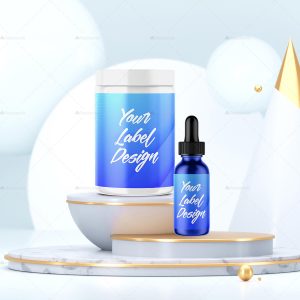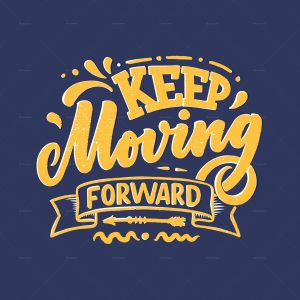Fitness is more than just exercise. In order to achieve optimal results, it is important to also consider other factors such as recovery, supplementation, and sleep.
Unfortunately, many people overlook these crucial elements in their fitness journey, leading to decreased performance and increased risk of injury.
In “Maximizing Fitness: A Guide To Recovery, Supplementation & Sleep”, we aim to educate and empower you to optimize your fitness routine.
This comprehensive guide covers the importance of recovery, the various types of recovery techniques, and how to incorporate them into your routine.
Additionally, we explore the benefits of supplementation and provide guidelines for choosing the right supplements.
Finally, we delve into the impact of sleep on fitness and offer tips for improving sleep quality.
By following the advice in this e-book, you will see not only improvement in your physical performance but also in your overall health and well-being.
Without further ado, let’s dive right in by first having an overview of the book!
Book Overview
The first section of “Maximizing Fitness: A Guide To Recovery, Supplementation & Sleep” focuses on the importance of recovery.
We examine what recovery is and what types of recovery there are to ultimately give you the answer to what matters most when it comes to recovery.
The second section focuses on sleep, which plays a crucial role in recovery and overall health.
We discuss the impact of sleep on fitness and offer tips for improving sleep quality. Finally, we delve into the topic of supplementation in the third section.
While supplements are often thought to be essential, they are actually the least important aspect of fitness.
Nevertheless, we provide guidelines for choosing effective supplements and explain how to incorporate them into your routine.
Overall, this e-book provides a comprehensive guide to optimizing your fitness journey through recovery, sleep, and supplementation.
Optimizing Recovery
Recovery is an essential aspect of training that is often overlooked. Proper recovery allows the body to repair and rebuild muscle tissue, reduce muscle soreness and stiffness, and improve overall performance.
Without adequate recovery, the risk of injury increases and progress can plateau. Recovery also helps to prevent burnout and fatigue by allowing the body and mind to rest and recharge.
There are several methods of recovery, including active recovery such as light exercise and stretching, and passive recovery such as rest and massage therapy.
Incorporating a mix of these techniques into your fitness routine can help to maximize the benefits of your training and improve overall health and well-being.
By prioritizing recovery in your fitness journey, you will not only see improvement in your physical performance, but also in your overall quality of life.
Types Of Recovery
There are two main types of recovery: active recovery and passive recovery. Active recovery refers to techniques that involve movement and physical activity, such as light exercise, stretching, or foam rolling.
The goal of active recovery is to promote blood flow and circulation, reduce muscle soreness and stiffness, and improve the range of motion.
Passive recovery, on the other hand, involves techniques that promote rest and relaxation, such as massage therapy or simply taking a break from physical activity.
Passive recovery helps the body to repair and rebuild muscle tissue, reduce inflammation, and improve overall recovery time.
It is important to incorporate both active and passive recovery techniques into your fitness routine to maximize the benefits of your training and reduce the risk of injury.
By finding a balance between active and passive recovery, you will be able to optimize your fitness journey and achieve your goals more effectively.
And frankly, that balance is not that difficult to strike – simply, periodize your training in a way that builds up to high levels of exertion, and then have periods of little to no exertion.
This is what we refer to as “active recovery” – engaging in low-intensity, cardiovascular activities that promote blood flow, and using them as a tool to recover from and build up to intense training sessions.
Once that’s set, make sure to get at least two deep tissue massages per month.
In terms of wake-time recovery through activities and therapies, this will suffice for most individuals who are not professional athletes but rather exercise recreationally.
Nutrition & Recovery
Nutrition plays a key role in recovery and is an essential aspect of training. A well-balanced diet that includes adequate protein, healthy fats, and carbohydrates can help to support the body’s recovery process and improve overall health and performance.
Aiming for 1 gram of protein per pound of body weight per day is a good target, along with 0.3-0.45 grams of healthy fats from quality sources of food and an appropriate amount of carbohydrates to support energy levels.
It is important to note that striking a balance in your nutrition is key.
Consuming too much of one macronutrient and not enough of another can negatively impact recovery and overall health.
Extremes tend not to be healthy.
By prioritizing balanced nutrition, you will provide your body with the necessary nutrients to repair and rebuild muscle tissue, reduce inflammation, and support overall recovery.
Here are our Top 10 recommended food sources to include in your nutrition plan:
- Grass-fed beef meat & liver
- Dairy products from grass-fed animals
- Free-range chicken/eggs
- Salmon, tuna & other seafood
- Root crops, such as sweet potatoes, regular potatoes, beetroot, and carrots
- White rice, lentils, and beans
- Starchy vegetables
- Green-leaf vegetables
- Fruits
- Nuts
How To Sleep Like A Baby
Now, while nutrition is important in the recovery process, sleep is perhaps even more critical.
Sleep is the body’s deepest form of recovery and rejuvenation and is essential for optimal health and performance.
During sleep, the body is able to repair and rebuild muscle tissue, reduce inflammation, and consolidate memories.
Additionally, sleep helps to improve mood, reduce stress, and enhance overall cognitive function.
It is recommended to aim for 7-9 hours of quality sleep each night to support recovery and overall health.
By prioritizing sleep and creating a sleep-friendly environment, you will see improved recovery time, reduced risk of injury, and enhanced overall performance.
In short, sleep is an essential aspect of recovery and should not be overlooked or sacrificed in the pursuit of fitness goals.
However, insomnia and general sleep disorders are common in today’s society due to the ocean of information we float through on a daily basis.
This same ocean leaves the brain seeking more and more stimulus, putting it into sort of an “overdrive” mode.
Not only that, but the amounts of artificial light make it physiologically difficult for our bodies to secrete the substances needed to feel drowsy and fall asleep.
So how can we counter these inevitabilities?
Let’s have a look.
Creating A Schedule
Creating a sleep schedule is the first step to optimizing sleep and ensuring adequate recovery.
A consistent sleep schedule helps to regulate the body’s circadian rhythm, which is the internal system that controls the sleep-wake cycle.
By establishing a regular sleep schedule, you can ensure that you are getting an appropriate amount of quality sleep each night.
This mainly includes setting a specific bedtime and wake-up time, besides creating a sleep-friendly environment.
By following a consistent sleep schedule and creating a sleep-friendly environment, you will see improved sleep quality, reduced risk of injury, and enhanced overall performance.
Taking the time to prioritize sleep is an investment in your health and well-being and will ultimately lead to better results in your fitness journey.
Rising With The Sun
Speaking of creating a sleep schedule, it’s important to design it around the natural day-night cycle of the planet.
Rising with the sun and going to bed within the hours after sunset can have a profound impact on sleep quality and recovery.
The human body is designed so that sunlight is a stimulus for the brain that signals it’s time to wake up.
When sunlight hits your eyelids in the morning, the body starts producing serotonin – a daytime hormone that makes us feel awake and aware.
Conversely, the absence of light is a signal that it is time to go to bed. When light is absent, the body produces melatonin – the nighttime hormone that makes us feel drowsy and eventually fall asleep.
This natural sleep-wake cycle is called the circadian rhythm, and it helps to regulate sleep patterns, energy levels, and various processes in the body.
By synchronizing your sleep schedule with the natural day-night cycle, you are granted to see improved sleep quality and enhanced overall performance as an end result.
This simple change can have a profound impact on your health and well-being and is well worth the effort to implement in your sleep routine.
Limiting Artificial Light
Our sleep-wake cycle is regulated by light, and artificial lights can have a significant impact on the ability to fall asleep and the quality of sleep.
In the hours leading up to bedtime, exposure to bright screens and artificial lights can interfere with the body’s natural production of the sleep hormone melatonin, making it more difficult to fall asleep and stay asleep.
To improve sleep quality, it is a good idea to minimize exposure to bright screens and artificial lights in the hours before bedtime.
Instead, rely on soft, yellow, dimmed lights to create a calming and relaxing environment.
This will help to promote the production of melatonin and improve the quality of sleep, ultimately making it easier to fall asleep and get the best-quality slumber.
Timing Caffeine Intake
Timing caffeine intake is an important factor in the ability to fall and stay asleep. Caffeine is a stimulant that can interfere with sleep, so it’s important to be mindful of when you consume caffeinated beverages.
Generally, you don’t want to consume caffeinated beverages in the last 7 hours leading up to bedtime.
This will help to ensure that the effects of caffeine have worn off by bedtime, allowing for a better night’s sleep.
It’s important to remember that caffeine affects individuals differently, and some people may be more sensitive to its effects than others.
If you have trouble falling asleep or staying asleep, it may be helpful to reduce or eliminate caffeine intake in the hours before bedtime.
By paying attention to caffeine intake and timing, you certainly can improve sleep quality.
All in all, prioritizing and optimizing sleep and creating a sleep-friendly environment is an investment in your health and well-being and will ultimately lead to better results in your fitness journey.
Do Supplements Matter?
Supplements are often thought to be essential for fitness success and recovery, but in reality, they are the least important aspect of your fitness journey.
Good nutrition, proper recovery, and adequate sleep should always be the primary focus.
However, that doesn’t mean there aren’t effective supplements available.
In fact, there are several scientifically proven supplements that can be helpful in your fitness journey.
The three main products that have been shown to be effective are creatine, protein, and caffeine.
Let’s have a look at those.
Protein
Protein is an essential nutrient for building and repairing muscle tissue and can also help with recovery.
However, it can be challenging to consume enough protein through food alone, especially for those who don’t like eating a lot of animal food.
In these cases, a protein powder can be a convenient and effective way to supplement protein intake.
Protein powders come in a variety of forms, including whey, casein, soy, and plant-based options.
When choosing a protein powder, look for a product that is made from high-quality ingredients and has a minimal amount of added sugar and fillers.
By supplementing with a high-quality protein powder, you can help to support your fitness goals and improve recovery.
Just like with all supplements, protein powders should not be relied upon as the sole source of protein, and a balanced diet rich in whole foods should always be the primary focus.
Caffeine
Besides protein for recovery, we have caffeine as one of the most effective supplements for boosting sports performance.
Caffeine is a stimulant that can help to improve focus, energy, and endurance during exercise.
It does this by increasing central nervous system activity and increasing the release of adrenaline and cortisol – two of the hormones that ramp up the body’s physical output capabilities.
Caffeine can also help to reduce feelings of fatigue and increase alertness, allowing you to push yourself further during workouts.
It has been shown to improve endurance performance in athletes, as well as increase strength and power output in resistance training.
When it comes to caffeine supplementation, it’s important to start with a lower dose and gradually increase it to find your personal tolerance.
Timing is also crucial, as we’ve already mentioned – consuming caffeine too close to bedtime can affect your ability to fall asleep.
Overall, caffeine can be a helpful tool for athletes looking to improve their performance and take their fitness to the next level.
However, like all supplements, it should be used in moderation and in conjunction with a well-rounded training and nutrition plan.
And hey, if you don’t like the idea of caffeine pills, you can always have a cup of coffee instead!
Creatine
Last but not least, we have creatine – this is one of the best-researched and safest supplements for improving training performance, particularly in the areas of maximum strength and strength endurance.
Creatine is a naturally occurring compound that is stored in the muscles and used as a source of energy during high-intensity exercise.
Supplementing with creatine has been shown to increase the amount of creatine stored in the muscles, allowing for improved performance during high-intensity activities.
This can lead to improved strength and power output, as well as increased endurance in strength activities that rely on the phosphocreatine energy system.
In addition, creatine has been shown to have a number of other benefits relating to cognitive function.
Despite the myths about it, creatine is considered safe for healthy adults when used as instructed and has been well-tolerated in numerous studies.
Whether you’re a seasoned athlete or just starting out, incorporating creatine into your supplement regimen can help to take your performance to the next level.
Recap
In conclusion, maximizing fitness requires a holistic approach that includes effective recovery, proper sleep, and, to a lesser extent, supplementation.
Here is a summary of the key takeaways from the guide:
Recovery: Proper recovery is essential to improve performance and prevent injury. This can be achieved through active recovery techniques, such as stretching and foam rolling, as well as passive recovery methods, such as massage and cryotherapy. Nutrition also plays a key role in recovery, with a focus on consuming adequate amounts of protein, fat, and carbohydrates.
Sleep: Sleep is the body’s deepest form of recovery and rejuvenation. To optimize sleep, it is important to establish a sleep schedule that aligns with the day-night cycle of the planet, reduce exposure to artificial light in the hours leading up to bedtime, and limit caffeine consumption.
Supplements: While supplements are the least important aspect of fitness, there are a few that can be effective, including creatine, protein, and caffeine. These supplements can help to improve performance, increase strength, and enhance recovery.
In conclusion, by incorporating these three elements – recovery, sleep, and supplementation – into your fitness journey, you will be able to maximize your results and reach your full potential.
And so… what are you waiting for?
* The information presented in this blog article is intended to provide general information only and should not be considered as professional or expert advice. While we have made efforts to ensure the accuracy and completeness of the information, we cannot guarantee its correctness. We accept no liability for any loss or damage that may arise from your reliance on the information contained in this article. We encourage you to seek professional advice or conduct your own research before making any decisions based on the information presented here.













